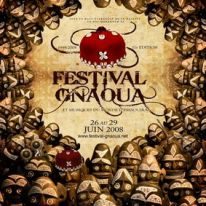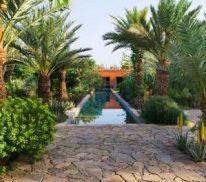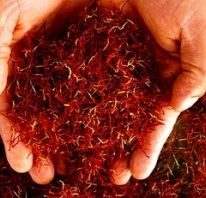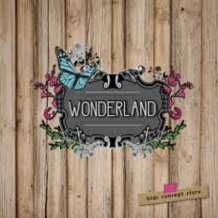
The Official Language of Morocco is Arabic “Darjia” and spoken by Most Moroccans. On part with Darija is Berber (Amazigh) and spoken by over 50% of Morocco’s Population. Although Arabic is a language spoken by hundreds of millions of people in North Africa, the Middle East, and the Arabian Peninsula, the Arabic spoken in Morocco, called Darija, is different than in other Arabic speaking countries. When traveling to Morocco bringing along an English/ French – Arabic dictionary will make your Morocco Travel experience more enjoyable.
The different dialects of spoken Arabic can best be compared to the range of dialects in the Chinese language. Pronunciations on words vary greatly as well. However, classically written Arabic, called Fossa, is standard and the same throughout the Arab world. The reason for this is because it is important that all Arabic speakers understand the Qur’an, which is written in Classical Arabic, Fossa. In recent decades, the spread of television and radio has increased Moroccans exposure to Modern Standard Arabic (MSA), adapted from standard written Arabic.
It is not uncommon for a Moroccan person to be a mix of Berber, Arab, Spanish, Black and Jewish descent. As result, over two thirds of Moroccans use Moroccan Darja as their first language but may also speak one or more additional languages. The other one-third of Moroccans includes the Berber population who live in the mountains, in villages within the Middle-Atlas and within remote areas of Morocco. As a result Morocco’s population expansion more Berbers today live in larger cities and administrative centers such as Ouarzazate, Agadir and Marrakech. The majority of Berbers primary language is Berber (Amazaigh) and while the older generation in remote regions do not speak any Moroccan Darija the younger generation does.

Tifnagh is the name of the Berber alphabet. Over three hundred Berber dialects exist in Morocco. The main ones include Tarifit spoken among inhabitants of the Rif Mountains, Tamazight is used by Berbers in the Middle and High Atlas Mountains and Tashelhit is spoken by residents of the Anti-Atlas Mountains in central Morocco and Tuareg in the Sahara.
Amazigh languages and traditions have prevailed in Morocco and the Berbers have recently reclaimed “Berber” as a unifying term. More then 60% of Moroccans now call themselves Amazigh or Berber and Berber languages are spoken by approximately 15 million Moroccans. With the backing of King Mohammad VI, who is part Berber himself, the ancient written Tifnagh alphabet has been revived as a national language and is now being taught in many schools. Within the next decade, Berber will be taught in public schools across Morocco along with English, the new accepted Lingua Franca of trade and tourism and Morocco.
King Mohammed VI’s of Morocco’s address on March 9, 2011 included an announcement of a reform of the Constitution and acknowledging the plurality of the Moroccan identity, united and enriched with the diversity of its tributaries, at the heart of which lies Amazaigh, the common heritage of all Moroccans. On June 12, 2011, a constitutional reform project was handed to the King by a commission run by constitutionalist Abdelatif Mennouni, in which the clear recommendation was to recognize two official languages for Morocco, Tamazight and Arabic, and there was an official vote in an Organic Law at Parliament to define the stages and terms of an official use of the Amazigh language in teaching, the media, and administration.
French is also commonly spoken among Berbers and Moroccans. With the exception of the most isolated children all Moroccans understand and can speak at least a little French. Although Arabic (Moroccan Darjia) is the national language and used for all formal proceedings in Morocco, international business is often conducted in French and many schools now teach in a mix of French and Arabic.
Morocco’s distance from the Middle East and its history of close contact with European nations have created a spoken Arabic “Darija” that incorporates many French words and expressions. Morocco’s months of the year are in French and many street names and signs are written in both Arabic and French. Also, as most books in Morocco as written in French, and seldom translated into English, it is often difficult for non- French speaking westerners to find literature from or about Morocco.
In addition to Arabic, Berber and French, it is also common to hear Spanish, German and most recently English in certain areas of Morocco. Until 1965, the Spanish controlled northern Moroccan cities such as Tetouan. Also, because northern Morocco is in such close proximity to Spain, Spanish is commonly spoken in Tangier. In Agadir, a beach resort destination attracting many Germans, German is spoken.
Since the tourism industry is an important part of Morocco’s economy, English is closely linked and used by anyone working in the tourism or hotel industry, thus you should have little trouble traveling in Morocco. While not necessary, if you happen to speak Moroccan Darija, Arabic or French it will make your experience more enjoyable and rewarding. Just speaking a few words of Arabic or knowing a few words of the Berber region you plan to visit will make Moroccans immediately friendlier and impressed because your attempt implies a respect for their culture.
 Travel Exploration specializes in Morocco Travel. We provide Tours and travel opportunities to Morocco for the independent traveler and tailor-made tours for families and groups with a distinctly unique flavor. From Morocco’s Seven Imperial Cities, to the Magical Sahara Travel Exploration offers a captivating experience that will inspire you. At Travel Exploration we guarantee that you will discover the best of Morocco! Call Travel Exploration at 1 (800) 787-8806 or 1 (917)703-2078 and let’s book a tour to Morocco for you today.
Travel Exploration specializes in Morocco Travel. We provide Tours and travel opportunities to Morocco for the independent traveler and tailor-made tours for families and groups with a distinctly unique flavor. From Morocco’s Seven Imperial Cities, to the Magical Sahara Travel Exploration offers a captivating experience that will inspire you. At Travel Exploration we guarantee that you will discover the best of Morocco! Call Travel Exploration at 1 (800) 787-8806 or 1 (917)703-2078 and let’s book a tour to Morocco for you today.




